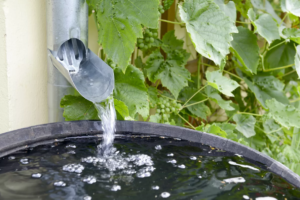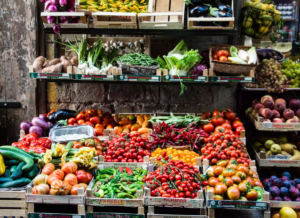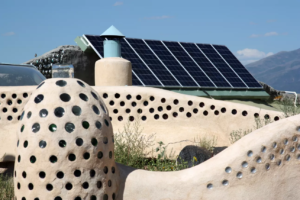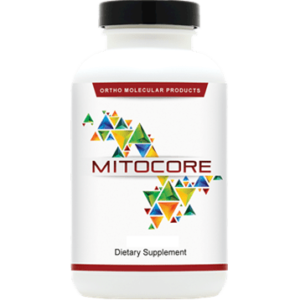In order to reach self-sufficiency, you would attempt to produce everything you need without relying on outside sources. To achieve self-sustainability, you would seek to produce only what you require and not take any more from the planet’s resources than you have to.
At a macro level, every country in the world desires true self-sufficiency for security purposes. To be dependent on another country for something as essential as food puts you at a disadvantage on a global scale. Policymakers disagree on whether true self-sufficiency is ideal, especially in terms of food trade, which has caused fluctuations in the state of national self-sufficiency capabilities.
On a micro level, individuals can take their carbon footprint into their own hands by pursuing both self-sufficiency and self-sustainability. The latter is much more manageable than the former since true self-sufficiency requires a total transformation of how modern society addresses our basic needs.
“Self Sufficiency” in Different Contexts
As sustainable living has gained popularity, eco-minded individuals have participated in popular movements to reduce their carbon footprint in creative ways. Homesteading, off-the-grid living, van and school bus conversions, and tiny houses have gradually worked their way into the fabric of mainstream society. Whether you choose to live in a converted bus or an off-the-grid cabin, the tenets of this kind of lifestyle remain rooted in self-sufficiency.
While this article focuses on making changes by choice to live a more self-sufficient and sustainable lifestyle, the practices are not novel and are not willingly undertaken by many people in isolated communities or in poverty. According to the World Health Organization, 2.1 billion people lacked safe drinking water at home in 2017. This lack of access has forced many to pursue other means of water access such as rainwater or well water collection. Many people do not have the luxury of depending on urban utilities and must find independent ways to service their homes and families with adequate basic necessities.
Additionally, communities in poverty face a disproportionate lack of access to healthy foods, which has prompted various programs to resolve this issue. For example, the Food and Agriculture Organization of the United Nations assisted in implementing urban micro-gardens in several African, Central, and South American countries to allow low-income families the means to grow their own produce to feed their family in addition to selling a small portion as a source of income. The micro-gardens proved successful due to rainwater collection and composting of household waste for fertilizer.
Different motivations have spurred people to attempt more self-sufficient lifestyles. The climate crisis is a major motivation behind this push for some, but survivability is also a popular consideration. While some people take a prepper’s approach to survivability with bug-out bags and emergency kits, others have pursued total self-sufficiency with provisions made for major events like natural disasters, power outages, and food scarcity.
The goal of self-sufficiency has been applied to different industries through a shift towards producing more goods in-house rather than depending on exports. This goal applies to economics as well. Even though self-sufficient living reduces your spending tremendously, there will still be inevitable costs that result from living in modern society (such as health care and taxes).
How to Be More Self Sufficient
Many actions can be taken to build a self-sufficient lifestyle, gradually addressing our basic needs with more sustainable alternatives. Depending on your preferences and finances, adaptions can be made to DIY your self-sufficient lifestyle addressing each basic need.
AIR
Air is abundant, but clean air is sometimes hard to come by. While there are air purifiers available, you can DIY one using a box fan and HVAC filter. However, certain plants naturally purify the air without relying on electricity. While plants are not as effective as electric air exchange systems in removing the volatile organic compounds (VOCs) that contaminate the air in our homes, they can remove some air pollution. English ivy, aloe, and spider plants are well-known for their purifying abilities. Study results published in the Journal of Exposure Science and Environmental Epidemiology in 2019 found that the rate at which air is cleaned by air exchange mechanisms common in many buildings would require 10 to 1,000 plants per square meter (10.77 square feet) of a building’s floor space.
While plants themselves can produce minimal air scrubbing, a study review published in Environmental Science and Pollution Research found that plant soil also contributes to VOC removal due to the presence of microorganisms.
Another comparative study published in the Journal of Toxicology and Environmental Health in 2012 investigated the efficacy of six hanging potted plants in improving indoor air quality in schools. While the study was limited in size, the findings included a decrease of about 30% in air particle concentration. However, the scientific community has remained skeptical about the sole use of plants for air purifying purposes, though the benefits of plants extend beyond air purification to personal well-being, stress relief, and naturopathic medicine.
 WATER – The two best off-the-grid water options involve rainwater harvesting and tapping a well or spring. Your property might not have a well or spring to use, which makes a rainwater harvesting system your best bet.
WATER – The two best off-the-grid water options involve rainwater harvesting and tapping a well or spring. Your property might not have a well or spring to use, which makes a rainwater harvesting system your best bet.
Water collection systems are designed to divert water from your roof into an above-ground or below-ground tank. There are many filtering options for both well/spring water and rainwater, including carbon, distillation, sand-based, and reed bed filters.
Grey water from showers and sinks can be recycled and reused in your home and garden. To make for easier filtration, take a look at what products are going down your sink and shower drains. Products filled with chemicals can make filtration more difficult. It is also recommended to limit your water use with actions such as dual-flush toilets or compost toilets.
 FOOD – Food trade and food self-sufficiency is a topic of disagreement among policymakers. The Food and Agriculture Organization defines food self-sufficiency as “the extent to which a country can satisfy its food needs from its own domestic production.” But a country can technically be self-sufficient at this standard and still accept or depend on food exports; and a food self-sufficient country can also have citizens suffering from hunger.
FOOD – Food trade and food self-sufficiency is a topic of disagreement among policymakers. The Food and Agriculture Organization defines food self-sufficiency as “the extent to which a country can satisfy its food needs from its own domestic production.” But a country can technically be self-sufficient at this standard and still accept or depend on food exports; and a food self-sufficient country can also have citizens suffering from hunger.
Many countries, including the United States, rely on the food trade for economic profit. However, countries with developing economies and high levels of food insecurity usually prefer to reduce their reliance on the global food trade in order to decrease the costs and risks linked with a volatile global food market.
On a community level, households can limit their dependency on exports by shopping at local farmers markets and buying products in-season. Those interested in achieving total self-sufficiency can grow their own food and produce goods themselves by dehydrating, canning, fermenting, salting, and applying other preservation techniques. Meat eaters can hunt or establish a farm for meat and dairy. For growing fruits and vegetables, crops should be diversified and adjusted for your given climate. There are many ways to grow your own garden or vegetable farm that range in size, cost, and self-sufficiency. Composting food scraps into rich compost soil can aid in food production. Many people raise their own chickens for eggs, but this requires proper zoning if you are in a suburban or urban area.
Along the lines of canning your own tomato sauce, homemade jams, and even pickles, you can also make your own bread, tortillas, crackers, homemade pasta, granola bars, condiments, etc., instead of relying on packaged products from the grocery store. Making your own food decreases plastic packaging waste and reduces what chemicals or pesticides you are consuming through processed foods.
 SHELTER – A self-sufficient shelter involves the actual structure as well as meeting energy and property needs. Self-sufficient shelters do not necessarily have to stay in one place (vans, RVs, school buses, airstreams, and portable tiny homes come to mind). If you do build an immobile self-sufficient home, you need to address property concerns.
SHELTER – A self-sufficient shelter involves the actual structure as well as meeting energy and property needs. Self-sufficient shelters do not necessarily have to stay in one place (vans, RVs, school buses, airstreams, and portable tiny homes come to mind). If you do build an immobile self-sufficient home, you need to address property concerns.
You may already own a plot of land. If not, depending on where you live, buying land can be costly and difficult. You should take zoning into consideration since some communities might not allow crop or livestock farming or even alternative homes like adobe or earthbag structures.
A modern house structure relies heavily on on-the-grid services for electricity, gas, water, and sanitation. Certain adaptations can be made for increased self-sufficiency, such as a backyard garden, solar panels, and an added rainwater collection tank. Many alternative structures have been designed for total self-sufficiency. Earthships, for example, are completely passive solar structures that use natural and salvaged materials to build a completely self-reliant home.
Energy needs can be addressed using solar, geothermal, hydro, and wind. Each option entails pros and cons, including cost. Ultimately, energy should be conserved as much as possible since our society has become largely energy-reliant and has high levels of energy consumption. Think about what energy you use in your daily life as well as the energy required to make the products you buy.
SLEEP Sleep is innately self-sufficient, right? Not necessarily. According to CDC reports, in 2017 and 2018, 8.2% of adults in the United States required medication to fall or stay asleep four or more times per week. Women relied on a sleep aid at a higher rate than men. Adults also reported sleeping less than what is recommended. According to the Sleep Foundation, adults between 18 and 64 years require seven to nine hours of sleep per night. However, a 2020 CDC study revealed that 35.2% of adults in this age group reported sleeping less than seven hours per night. Certain teas, exercise, technology breaks, and cooling temperatures can improve sleep naturally.
SAFETY Security and safety can be achieved by making your home into a fortress with secured access points, solar lights, and noise traps. Medical safety is another consideration in itself. First aid and emergency training are offered by many organizations including the Red Cross.
CLOTHING Why buy a piece of clothing when you can make your own? Learning how to darn rips and sew holes can turn into an invaluable skill. Advanced sewing skills can mean the difference between making your own clothes and having to buy them. Knitting, crocheting, weaving, and other textile skills can lead you to designing your own sweaters, blankets, baskets, hats, and gloves. Making your own clothing allows you greater agency in choosing more sustainable fabrics and materials.
While these are just a few examples of how to become self-sufficient, there are a whole range of ideas and skills to build a more self-reliant and sustainable lifestyle. Skills like carpentry, woodworking, masonry, electric wiring, plumbing, welding, first aid training, and natural medicine training can take time to develop but will be worth it in the long run.
For full references please use source link https://tinyurl.com/44kbux7j
MOST POPULAR PRODUCTS ON THIS SITE
-
Sale!
 Quick View Select options This product has multiple variants. The options may be chosen on the product page
Quick View Select options This product has multiple variants. The options may be chosen on the product pageOrgone Energy Sleeping Pods
$77.00 – $150.00 -
 Quick View Add to cart
Quick View Add to cartNutrition Challenge
$19.00 -
Sale!
 Quick View Add to cart
Quick View Add to cartOrgone Energy Sleeping Pods Special Offer!
Original price was: $308.00.$250.00Current price is: $250.00. -
Sale!
 Quick View Select options This product has multiple variants. The options may be chosen on the product page
Quick View Select options This product has multiple variants. The options may be chosen on the product pageOrgonite Shungite Pyramids Special Offer!
$85.00 – $315.00 -
Sale!
 Quick View Select options This product has multiple variants. The options may be chosen on the product page
Quick View Select options This product has multiple variants. The options may be chosen on the product page5 Orgonite Pendants
Original price was: $150.00.$95.00Current price is: $95.00. -
Sale!
 Quick View Select options This product has multiple variants. The options may be chosen on the product page
Quick View Select options This product has multiple variants. The options may be chosen on the product pageOrgonite Phone Shields for Radiation Protection
$89.00 – $184.00 -
Sale!
 Quick View Add to cart
Quick View Add to cartGraphene Oxide Removal Supplements – Special Offer!
Original price was: $294.44.$229.00Current price is: $229.00. -
 Quick View Add to cart
Quick View Add to cartNAC 500 mg. 90 caps
$29.00 -
Sale!
 Quick View Select options This product has multiple variants. The options may be chosen on the product page
Quick View Select options This product has multiple variants. The options may be chosen on the product pageOrgonite Shungite Pyramids
$95.00 – $335.00 -
Sale!
 Quick View Add to cart
Quick View Add to cartOrgonite Urban Garden Set
Original price was: $250.00.$190.00Current price is: $190.00. -
 Quick View
Add to cart
Quick View
Add to cart
-
Sale!
 Quick View Add to cart
Quick View Add to cartThyroid 100 Vegicaps 40 mg
Original price was: $34.99.$29.99Current price is: $29.99. -
Sale!
 Quick View Add to cart
Quick View Add to cartKava Kava Root Extra Strength 1oz/2oz
Original price was: $80.00.$60.00Current price is: $60.00.


